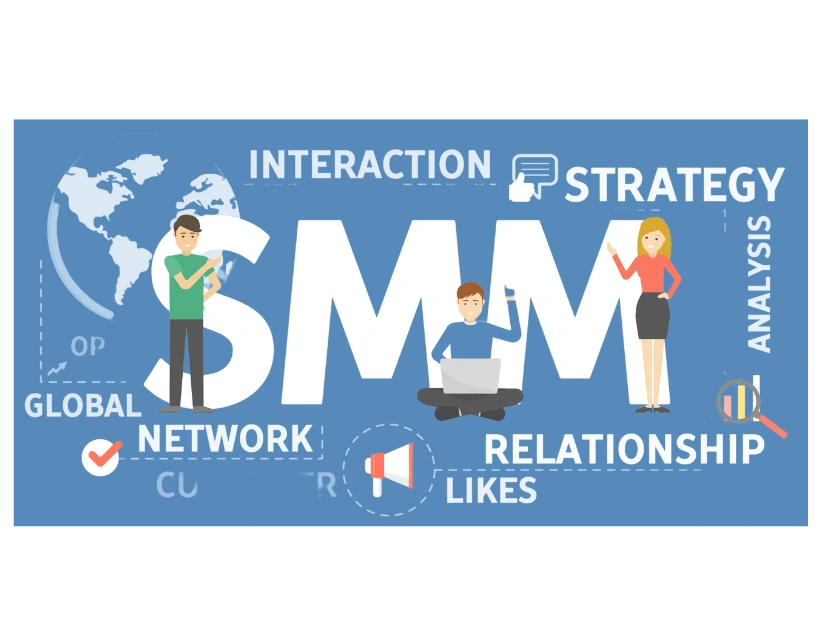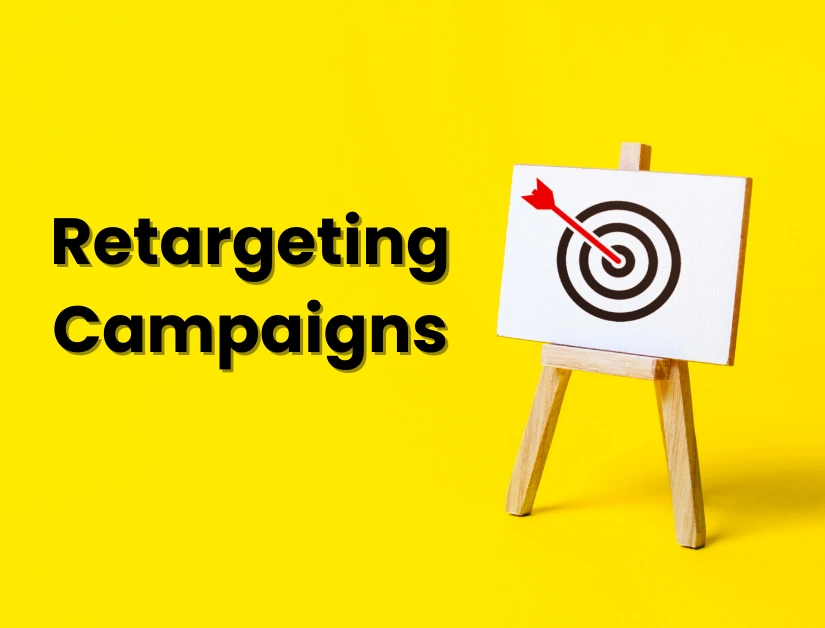Dilpreet Kaur
2025-12-25
7 min read
Top eCommerce Development Companies in the USA for 2026
Finding the right partner can make or break your online business.
Read More
Conversions are the lifeblood of any e-commerce business. They represent the number of visitors that take the desired action, whether it’s making a purchase, signing up for a newsletter, or requesting more information. Without a high conversion rate, all the traffic in the world won’t do you much good. That’s why it’s essential to focus on strategies that not only attract visitors but also encourage them to take action.
If you are getting traffic on your store but aren’t able to convert that into sales, reaching your revenue goals can be hard. And as scary as it might seem, low ecommerce conversion rates means store closure. And, that’s probably the last thing you would want to happen to your store.
According to ecommerce experts, a standard conversion rate of 1-3% is normal, whereas 4% and more is considered fantastic.
At Webguruz, the definition of a good conversion rate is based on your internal data and business goals. As a strict rule, we prioritize increasing your conversions month-over-month than how that number compares to your competitors. This is because there will always be a new tool, strategy, or update that you can use to outshine among your competition.
Even if the rate is above the industry average, keeping yourself updated about the new ways to increase conversions will help you continue delivering optimized user experience and website functionality to your website visitors. And, if the rate is on the lower side, implementing the following e-commerce marketing strategies can help.
To dominate your market and achieve exceptional conversion rates, you need a comprehensive marketing strategy that covers all the bases. Let’s explore the top e-commerce marketing strategies that have proven to be highly effective for businesses of all sizes.

When it comes to driving organic traffic to your e-commerce site,>search engine optimization (SEO) is a must. By optimizing your website for search engines, you can increase your visibility in search results and attract highly targeted traffic.
According to a study by Backlinko, hardly 4.8% of searchers make it to the second page of the SERPs. The number is even lesser for page three- 1.1%. On top of that, your rank on the first page matters as well. With the CTR varying heavily across ranks, it is important that you make it a priority to target Rank 1 on the first page of the SERPs.
| Ranking Position on the First Page | CTR(%) |
| 1 | 31.73 |
| 2 | 24.71 |
| 3 | 18.66 |
| 4 | 13.6 |
| 5 | 9.51 |
| 6 | 6.23 |
| 7 | 4.15 |
| 8 | 3.12 |
| 9 | 2.97 |
| 10 | 3.09 |
Now, from optimizing your product pages with relevant keywords to creating compelling meta tags and improving website speed, there are several SEO techniques you can implement to improve your ecommerce site’s search engine rankings.
You can also optimize product pages for different keywords, create blog content for your website, and request backlinks from reputable websites to build page authority. Furthermore, keep on adding new pages with detailed content on a regular basis. This will help search engines know that your website is active and freshly updated.

While SEO is a long-term strategy, pay-per-click (PPC) advertising offers immediate results. With PPC ads, you can bid on relevant keywords and have your ads displayed above organic search results. This gives you instant visibility to potential customers who are actively searching for products or services like yours.
PPC for e-commerce is simple. There are some easy steps you can follow to launch an ad campaign for your store:
Creating an ad is simple for a majority of ecommerce PPC campaigns. Such ads are small and include a headline, few lines of ad copy and an image. In the case of Google Ads, you won’t even need an image. A link to your landing page, a headline and two lines of copy is all that would be required.
Once you have created an ad, include the right keywords that will trigger it. The ad will only appear when someone searches for those keywords or close variations of the same.
Once you are done creating the ad and have selected the right keywords, you can decide how much you are willing to “bid” to have the ad displayed. This amount will depend on the competition level of your selected keywords.
High-volume and high-competition keywords would require you to pay more per click than you would pay for low volume keywords. This is among the top reasons that proper keyword research is important for e-commerce PPC.
By carefully crafting your ad copy, targeting the right keywords, and continuously optimizing your campaigns, you can drive high-quality traffic to your e-commerce site and increase your conversions.
Also Read: The Ultimate Guide to PPC Marketing

Email marketing is a powerful tool for nurturing leads and turning them into loyal customers. By building an email list of interested prospects, you can send targeted emails promoting your products, sharing valuable content, and offering exclusive discounts. With email automation tools, you can set up personalized email campaigns based on customer behavior, such as abandoned cart reminders or follow-up emails after a purchase. By delivering relevant and timely messages to your customer’s inboxes, you can increase engagement, build trust, and drive more conversions.
One of the significant advantages of email marketing is its versatility in catering to different stages of the customer journey. At the awareness stage, you can send informative and educational content to introduce potential customers to your brand and products. As prospects move further along the sales funnel, personalized product recommendations and customer testimonials can help alleviate any hesitations and push them towards making a purchase decision.
Moreover, email marketing provides a direct and intimate channel for communication with your audience. It allows you to address their pain points, answer questions, and provide exceptional customer support. By fostering this one-on-one connection, you can build a strong sense of brand loyalty and turn customers into brand advocates, who not only make repeat purchases but also actively recommend your products to their network.

Social media platforms provide excellent opportunities to connect with your target audience and drive traffic to your e-commerce site. By creating compelling content, engaging with your followers, and running targeted ads, you can increase brand awareness, attract new customers, and generate more sales. Platforms like Facebook, Instagram, and Pinterest offer robust advertising options that allow you to reach highly targeted audiences based on demographics, interests, and behaviors. By leveraging the power of social media, you can amplify your reach, build a loyal community, and boost your conversions.
An essential aspect of social media marketing is building a consistent and authentic brand presence across platforms. Each platform requires a tailored approach, considering the audience’s preferences and behavior on that specific channel. For instance, Instagram may require visually stunning images and engaging Stories, while Twitter necessitates concise and impactful messaging.
Moreover, social media provides an avenue for social proof, which plays a significant role in influencing purchase decisions. Positive reviews, user-generated content, and endorsements from influencers can instill trust and credibility in your brand, encouraging potential customers to make a purchase. Engaging with customers directly through comments and direct messages also demonstrates your commitment to providing exceptional customer service, further strengthening their loyalty.
Recommended: Instagram for E-commerce: How to Drive Sales with Instagram Shopping

Influencer marketing has become a popular strategy for e-commerce businesses looking to expand their reach and tap into new markets. By partnering with influencers who have a large and engaged following, you can leverage their influence to promote your products and drive sales. Whether it’s through sponsored posts, product reviews, or giveaways, influencers can help you increase brand awareness, build credibility, and reach a highly targeted audience. When choosing influencers to work with, it’s essential to find ones that align with your brand values and have a genuine connection with their followers.
The success of influencer marketing lies in identifying the right influencers for your brand and establishing a mutually beneficial partnership. Authenticity is key; consumers are more likely to trust recommendations from influencers they perceive as genuine and reliable. Micro-influencers, with smaller but highly engaged followings, can be particularly effective in niche markets, as their recommendations feel more personal and relatable.
To measure the impact of influencer marketing, track key performance indicators such as website traffic, engagement rates, and conversion rates resulting from influencer collaborations. Additionally, encourage influencers to share unique discount codes or affiliate links to track sales directly attributed to their efforts. This data will help refine your influencer marketing strategies and optimize future partnerships for even better results.

Content marketing is all about creating valuable and relevant content to attract, engage, and convert your target audience. By producing high-quality blog posts, videos, infographics, and other types of content, you can establish yourself as an authority in your industry and build trust with your audience. Content marketing can also help improve your search engine rankings, drive organic traffic, and increase conversions. From creating product tutorials and buying guides to sharing customer success stories and industry news, there are countless ways to leverage content marketing for your e-commerce business.
In the age of information overload, creating content that stands out requires a strategic approach. Conduct thorough research to understand your audience’s pain points, interests, and search behavior. By addressing their specific needs, you can position your brand as a valuable resource and gain their trust. Consistency is also vital in content marketing; develop a content calendar to ensure a steady stream of relevant content that keeps your audience engaged and coming back for more.
Furthermore, diversify your content formats to cater to different preferences and learning styles. Some individuals prefer reading detailed blog posts, while others may prefer quick video tutorials. By offering various content types, you can capture a broader audience and keep them engaged across different platforms and channels.

Conversion rate optimization (CRO) is the process of optimizing your website and marketing campaigns to maximize conversions. By analyzing user behavior, conducting A/B tests, and making data-driven optimizations, you can improve your website’s user experience, reduce friction in the buying process, and increase your conversion rate. From optimizing your checkout process and simplifying your forms to adding trust signals and improving your product descriptions, there are several CRO techniques you can implement to boost your conversions and drive more sales.
An essential step in CRO is identifying potential points of friction in the customer journey. Analyze user data, conduct user surveys, and seek feedback to understand pain points and areas that may be deterring users from completing a purchase. By addressing these issues, such as slow loading times, unclear call-to-action buttons, or excessive form fields, you can create a smoother and more enjoyable shopping experience for your customers.
A/B testing is a fundamental aspect of CRO that allows you to compare different variations of your website or marketing campaigns to determine which ones yield better results. Test variations of landing pages, email subject lines, product images, and other elements to discover what resonates best with your audience and drives more conversions. Keep in mind that CRO is an ongoing process, and continuous testing and optimization are crucial to staying ahead of changing consumer behavior and market trends.

While acquiring new customers is essential, retaining existing customers is equally important for long-term success. By implementing customer retention strategies, such as personalized email campaigns, loyalty programs, and excellent customer service, you can encourage repeat purchases, increase customer lifetime value, and turn your customers into brand advocates. By focusing on customer retention, you can build a loyal customer base that will continue to support your e-commerce business for years to come.
A strong focus on customer service is the backbone of successful customer retention. Ensure that you have clear and accessible channels for customers to reach out with inquiries, feedback, or concerns. Train your customer support team to be empathetic, responsive, and proactive in resolving issues to leave a positive impression on your customers.
Personalization is a key component of effective customer retention strategies. Utilize data from past purchases, browsing behavior, and customer preferences to create personalized email campaigns and product recommendations. Show your customers that you understand their needs and value their loyalty by offering exclusive discounts, early access to new products, or personalized promotions.
Implement a well-structured loyalty program that rewards customers for their repeat business. Whether it’s through points-based systems, tiered benefits, or referral rewards, loyalty programs incentivize customers to keep coming back to your store. These programs not only increase customer retention but also foster a sense of community and belonging among your customers, strengthening their emotional connection to your brand.

Cross-selling and upselling are powerful techniques for increasing the average order value and maximizing revenue from existing customers. Cross-selling involves recommending complementary products or services that go hand-in-hand with the customer’s initial purchase, while upselling encourages customers to upgrade to a higher-priced or premium version of the product they are considering. When done effectively, these strategies not only boost revenue but also enhance the overall customer experience.
Implementing cross-selling strategies involves understanding your customer’s preferences and purchasing behavior. Analyze data to identify common product combinations and create targeted offers that present relevant cross-selling suggestions. For example, if a customer purchases a camera, you can recommend additional lenses, a camera bag, or a tripod. These tailored recommendations demonstrate that you genuinely understand their needs and add value to their purchase.
Upselling, on the other hand, requires careful positioning and showcasing the added benefits of premium products. Highlight the unique features, enhanced performance, or additional services that come with the higher-priced option. Provide clear and compelling reasons why the upgrade is worth the investment. Offering limited-time promotions or discounts can also incentivize customers to opt for the premium version.
It’s essential to strike a balance between cross-selling and upselling without overwhelming the customer. Avoid bombarding them with too many offers and ensure that the suggestions are genuinely beneficial and relevant to their needs. By successfully implementing cross-selling and upselling strategies, you not only increase your revenue but also foster customer loyalty and satisfaction by helping them make informed purchase decisions.

Retargeting campaigns, also known as remarketing, are an integral part of a comprehensive digital marketing strategy. These campaigns target users who have previously visited your website or engaged with your brand but did not complete a desired action, such as making a purchase or filling out a contact form. Through retargeting, you can re-engage these prospects and encourage them to return and convert.
The key to successful retargeting campaigns lies in personalized and relevant messaging. Segment your audience based on their behavior and interactions with your website. For example, create different retargeting ads for users who abandoned their shopping carts versus those who explored specific product categories. Tailor your ads to remind them of the products or services they showed interest in, and consider offering limited-time discounts or promotions to entice them back.
Retargeting ads should be strategically placed across various platforms, including social media, display networks, and search engines. Consistent exposure to your brand can reinforce brand recall and encourage users to take the desired action. Frequency capping is crucial to prevent ad fatigue and ensure that your ads remain effective without becoming intrusive.
Furthermore, use retargeting as an opportunity to address any concerns or objections users may have had during their initial visit. Provide additional information, customer reviews, or testimonials to build trust and alleviate any hesitations they might have about completing a conversion.
Also Read: Remarketing vs. Retargeting: Understanding the Difference and How to Use Each Effectively

Branding and reputation management are fundamental aspects of building a strong and trustworthy brand identity. Your brand is more than just a logo; it encompasses the values, personality, and emotions associated with your business. Effective branding communicates a clear and consistent message to your target audience, helping you stand out in a crowded market and foster a loyal customer base.
Start by defining your brand’s mission, vision, and core values. This foundation will guide your branding efforts and ensure that all aspects of your business, from visual elements to customer interactions, align with your brand identity. Develop a compelling brand story that resonates with your audience, highlighting what sets your business apart and why customers should choose you.
Consistency is crucial in branding. Ensure that your brand elements, such as colors, fonts, and tone of voice, remain consistent across all touchpoints, including your website, social media, packaging, and marketing materials. This consistency reinforces brand recognition and helps build trust and familiarity with your audience.
Online reputation management is equally important in today’s digital landscape. Monitor online reviews, social media mentions, and customer feedback regularly. Respond to both positive and negative feedback promptly and professionally, demonstrating that you value your customer’s opinions and are committed to providing excellent service.
In times of crisis or negative publicity, address the issue transparently and take appropriate actions to resolve the situation. A proactive approach to reputation management can help mitigate potential damage to your brand’s image and maintain the trust of your customers.
Utilize storytelling and content marketing to communicate your brand’s values and connect with your audience on a deeper level. Share authentic stories about your brand’s journey, customer success stories, and the impact of your products or services. Engaging content builds an emotional connection with your audience and enhances brand loyalty.
By investing in branding and reputation management, you can cultivate a strong and positive brand image that resonates with your target audience, differentiates your business from competitors, and ultimately drives customer loyalty and advocacy.
Implementing successful e-commerce marketing strategies requires a combination of creativity, data-driven decision-making, and the right set of tools and resources. These tools can streamline your marketing efforts, provide valuable insights, and help you optimize your campaigns for maximum impact. Here are some essential tools and resources to consider for your e-commerce marketing toolbox:
Selecting a robust e-commerce platform is the foundation of your online store. Look for platforms that offer user-friendly interfaces, secure payment gateways, customizable design options, and integrated marketing features. Popular ecommerce platforms like Shopify, WooCommerce, and BigCommerce are excellent choices that cater to different business sizes and requirements.
Email marketing remains a powerful channel for engaging with your customers. Choose an email marketing software that allows you to design visually appealing emails, segment your audience, automate campaigns, and track email performance. Platforms like Mailchimp, Klaviyo, and HubSpot offer a range of features to enhance your email marketing efforts.
To effectively manage your social media presence, consider using social media management tools. These platforms enable you to schedule posts, monitor mentions and engagement, and analyze the performance of your social media campaigns. Hootsuite, Buffer, and Sprout Social are popular choices in this category.
When implementing influencer marketing campaigns, utilizing influencer marketing platforms can simplify the process of finding and collaborating with influencers. These platforms connect brands with relevant influencers and provide analytics to measure the impact of influencer campaigns. Examples include AspireIQ, Traackr, and Influencity.
Creating visually appealing and engaging content is essential for e-commerce marketing. Consider using graphic design tools like Canva or Adobe Creative Cloud to design eye-catching images, videos, and infographics. For video creation, tools like Animoto or InVideo can be valuable resources.
Google Analytics is a must-have tool for tracking and analyzing website traffic and user behavior. It provides valuable insights into your visitor’s demographics, interests, and behavior on your site, enabling data-driven decision-making to improve your website and marketing strategies.
To improve your website’s search engine rankings, invest in SEO and keyword research tools. Tools like SEMrush, Ahrefs, and Moz can help you identify relevant keywords, analyze competitor’s strategies, and optimize your content for better organic search visibility.
Enhance your conversion rate optimization efforts with specialized tools like Crazy Egg, Hotjar, or Google Optimize. These tools offer heatmaps, A/B testing capabilities, and user behavior analysis to identify areas for improvement on your website.
CRM software allows you to manage and nurture your customer relationships effectively. It helps you track customer interactions, segment your audience, and implement personalized marketing campaigns. Popular CRM platforms include Salesforce, HubSpot CRM, and Zoho CRM.
Marketing automation platforms can significantly streamline your marketing workflows by automating repetitive tasks, such as email sequences and lead nurturing. Platforms like ActiveCampaign, Marketo, and Pardot can help you deliver targeted and timely messages to your audience.
Collecting feedback from your customers is essential for improving your products and services. Tools like SurveyMonkey, Typeform, or Google Forms allow you to create and distribute surveys to gather valuable insights and opinions from your customers.
To better understand how users interact with your website, consider using heat mapping and user testing tools. These tools provide visual representations of user behavior, showing where users click, scroll, or spend the most time on your site. Tools like UserTesting or Crazy Egg offer such features.
By utilizing these tools and resources, you can optimize your e-commerce marketing strategies, gain deeper insights into customer behavior, and ultimately drive more traffic, conversions, and revenue for your online store. Always stay updated with the latest marketing trends and technologies, as the digital landscape is continually evolving, and new tools may emerge to further enhance your marketing efforts.
In today’s competitive e-commerce landscape, implementing effective marketing strategies is essential to dominate your market and unleash the full potential of your conversions. By optimizing your website for search engines, running targeted PPC campaigns, leveraging the power of email marketing and social media, and implementing CRO techniques, you can drive targeted traffic, increase conversions, and achieve exceptional results. Remember to focus not only on acquiring new customers but also on retaining existing ones to build a loyal customer base that will support your e-commerce business for years to come. With the right strategies and tools in place, you can take your e-commerce business to new heights and leave your competitors in the dust.
So, what are you waiting for? It’s time to unleash the power of e-commerce marketing and watch your business soar.

Dilpreet Kaur
2025-12-25
7 min read
Finding the right partner can make or break your online business.
Read More
Dilpreet Kaur
2025-12-25
7 min read
Sending emails and hoping for the best isn’t a strategy.
Read More
Dilpreet Kaur
2025-12-25
7 min read
Finding the right digital marketing agency can feel overwhelming. With thousands of options out there, how do you know which one will actually help your business grow?
Read More